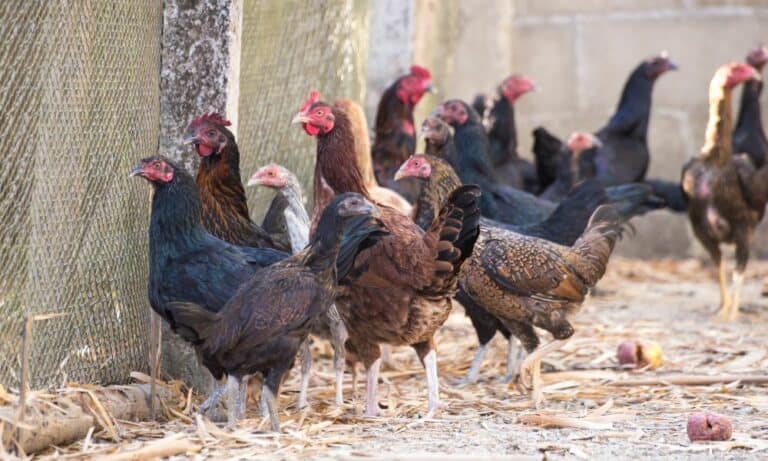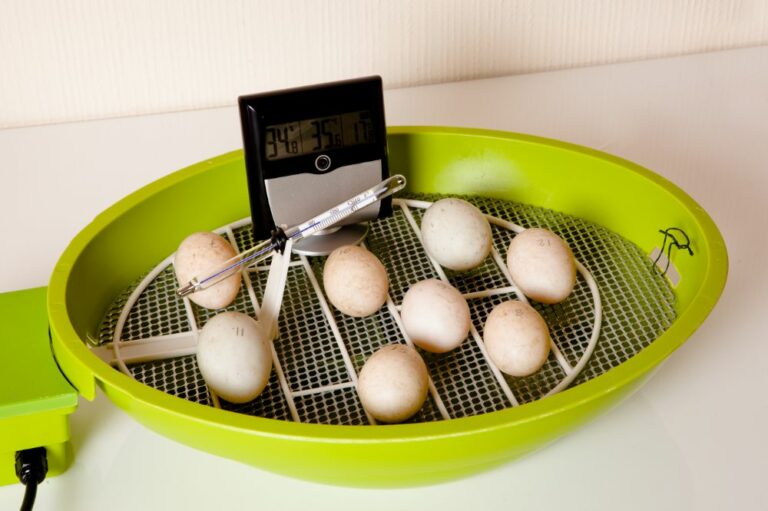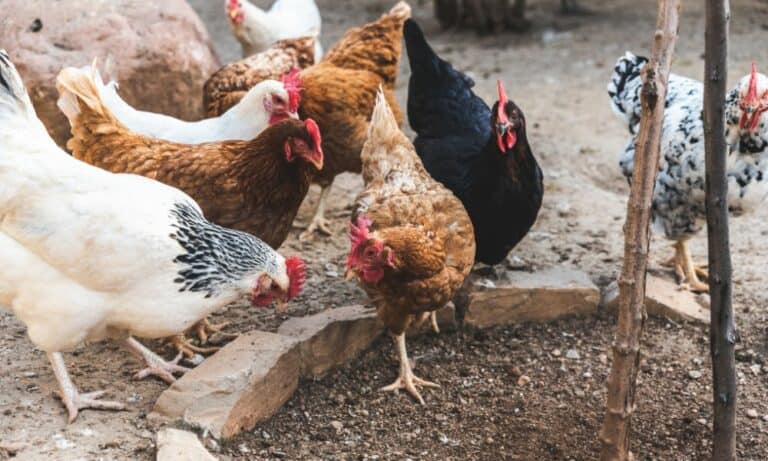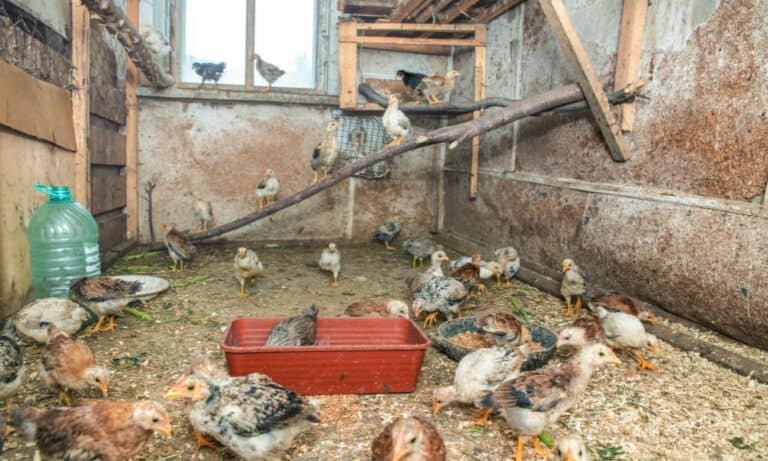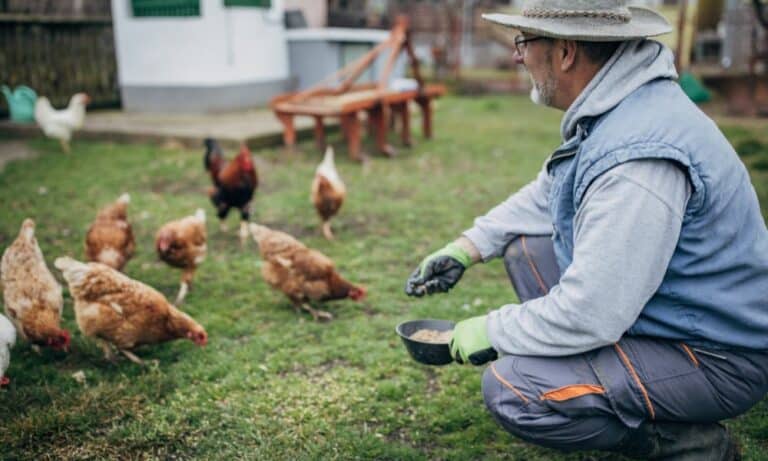If you are reading this, the chances are that you have baby chicks, or your hens are about the hatch, and you need a source of heat! The common question is, how long do chicks need a heat lamp?
For those new to the field and never raised a chick in their life, this may be complicated, and the truth is it often happens that baby chicks die due to improper care.
So, if you want to avoid this situation and learn about raising chicks, why they need a heat lamp, and how long they need it, keep reading!
For How Long Will I Need To Have A Heat Lamp?
Today, chickens are often kept as pets, and if you go to a pet shop and buy a chick or two, the nice employees will tell you first that you need a heat source and that you should not let them outside before they turn six weeks.
So, baby chicks under six weeks old will need a heat lamp because they do not have insulating feathers on their bodies to provide heat. In other words, they are unable to regulate their own body temperature.
Therefore, exposing chickens in their “summer outfits” during colder times may result in their premature death. When I first saw baby chickens in a coop with a light bulb, I wondered why they needed it.
Then I thought about their fuzzy or fluffy “coats,” which appear to be very warm, but they are not.
Although their feathers are utterly adorable, they are not sufficient, and chickens under six weeks generally need an optimal temperature between 95 and 100 degrees F for growth and development.
As with many baby animals, the first six weeks of life is a delicate period for a young chicken, mainly because they are prone to various sicknesses during winter or colder periods. Interestingly, they often cluster or huddle together to share body heat.
However, you cannot rely on the baby chicks to keep themselves warm. Also, there are different breeds of chicken, some developing earlier and others later. For example, broilers develop and grow very fast, and that is due to their genetic constitution.
If you have stumbled upon an unknown breed, and you want to learn more about them and when they mature, we suggest contacting a vet. They will provide you with the necessary information about that specific breed so you can take better care of it.
Also, if you notice that some chicks are staying away from the lamp and clustering with other chicks, those chicks are most likely ready to explore the outside world. Ultimately, chickens need a heat source in their brooder for four to six weeks!
What Are The Best Temperatures for Baby Chicks?
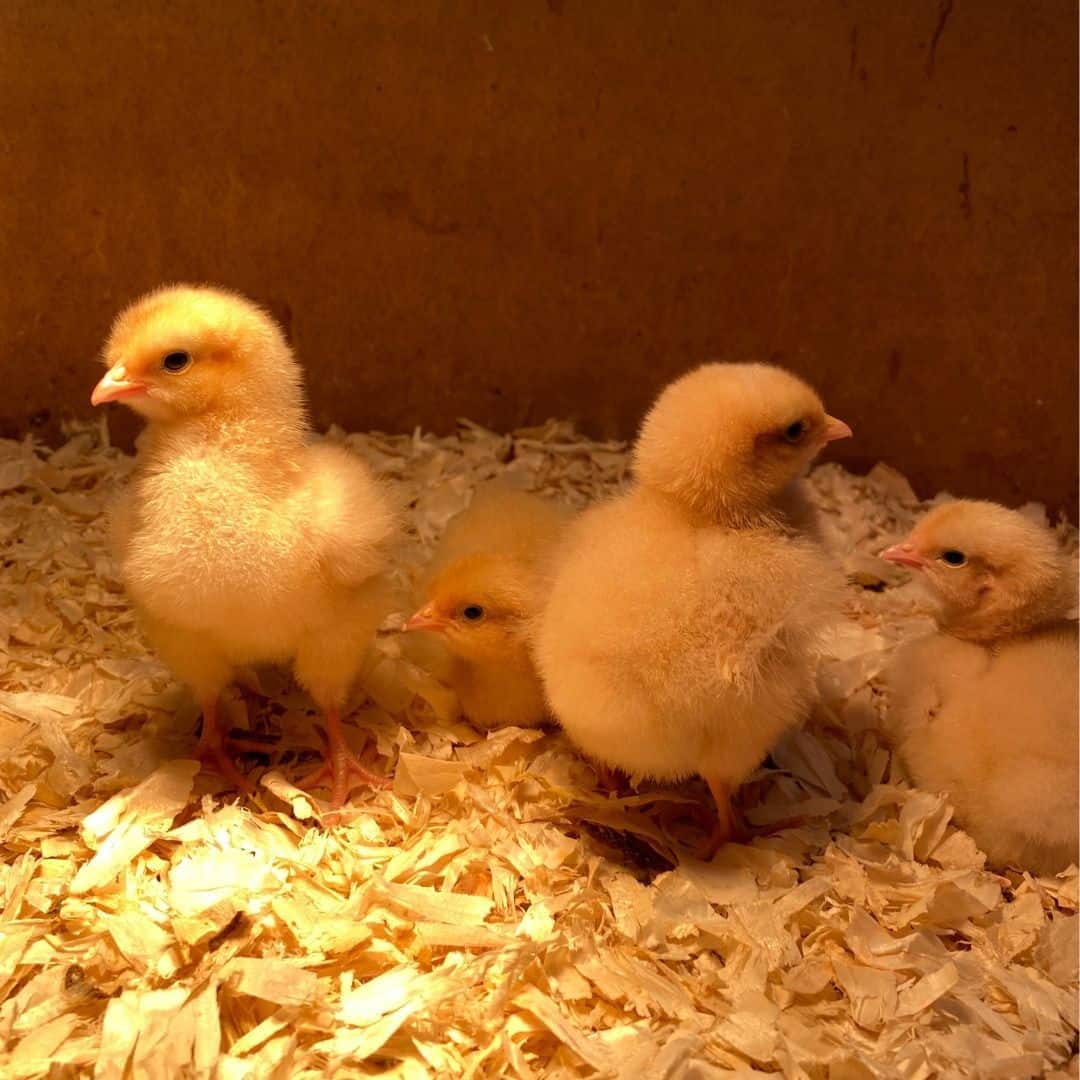
As noted, different breeds develop at different rates, and although most chickens need a heat lamp for at least 4 weeks, some breeds need it for much longer, 10 or 18 weeks.
Interestingly, in nature, the mother hen will keep the chickens warm, but in the brooder box, the situation is different.
Also, the climate can be vital in estimating how long your chickens will need a heat source. If you live in a colder area or your chickens hatched in winter, they will likely need the heat lamp for at least 10 months.
During the first week, the optimal temperature for the chicks is around 95 degrees F. For the second week, you can lower it to 90 degrees F. During the third and fourth weeks, you can keep the temperature between 85 to 80 degrees F in the brooder box.
In the fifth week, the optimal temperature is around 75 degrees, and during their last week with the heat lamp, you can keep the temperature at 70 degrees F. The best way to keep track of the temperature in the brooder is to place a thermometer.
That way, you can always check and adjust it if the chicks are cold or the temperature is too high.
At the age of six months or later, the chicken’s feathers start to grow, and that is the right period to start slowly adapting or acclimatizing to the outside temperature.
How To Set Up a Chicken Brooder and a Heart Source?
Obviously, when raising your backyard chickens, you will need a utility lamp.
Sometimes the ones you get at the store might be good for the 150-watt bulb, but if you are raising them at a colder time of the year, where you will most likely need a 250-watt bulb, you need to make sure that it has a ceramic or porcelain heating element.
Why? The heat source can easily melt plastic and similar materials, which may cause a fire. The ceramic element also needs to be rated to the 250-watt bulb. The lamp needs to be placed away from the pine shavings at about 18 inches from the floor.
The ideal place for the lamp is on one side of the brooder, while you can put fresh water and a feeder on the opposite side.
You also need to ensure a secure way to rig up your cord; you can use the clamp that comes with the lamp or find another way to raise it up and down.
Another option is to make a little bracket coming out of the wall, so you can raise it and lower it in case of temperature change.
Most lamps come with a guard at the bottom, but we suggest that you also install chicken wire or metal hardware cloth on top of the box, so in case the lamp falls, it will fall on metal and not the bedding and your baby chicks.
Do Chickens Need the Heat Source 24/7?
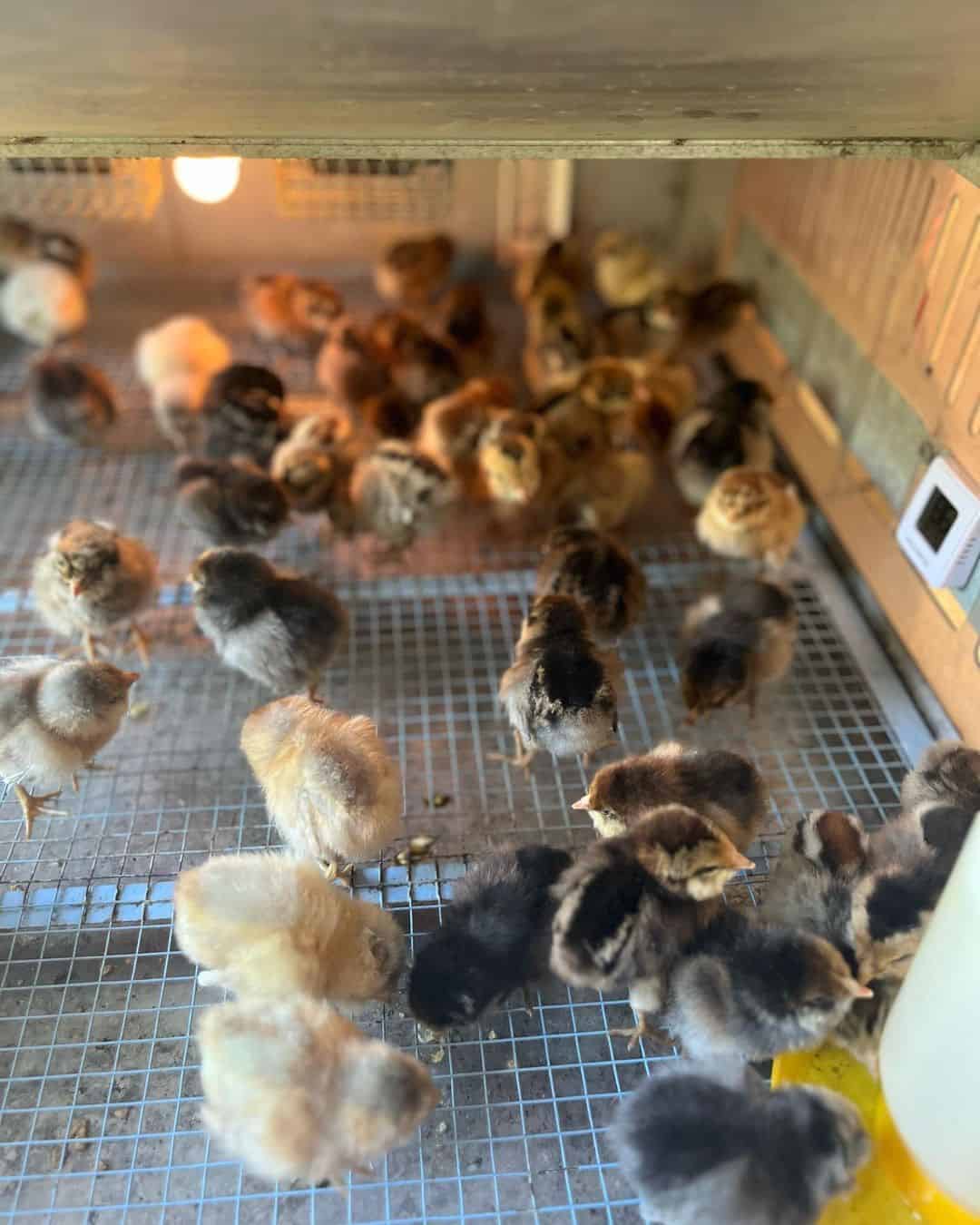
The bulb or the light that you need should be infrared because it will be turned on 24/7 (if it is the only source of heat) for four to six weeks, and baby chicks need something soothing. You can use white light, but red is less stressful and does not affect their sleeping regime.
Keep in mind that most experts recommend red bulbs.
Since the market today offers several different products, you can also use heat plates or heating pads.
Some people like using ceramic heat emitter bulbs, often used for pet reptiles. As the chicks grow, you can buy one that is 100 or 150 watts, emitting heat but not light. Although these bulbs use less electricity, they are more expensive than the regular ones.
How To Know When My Chicks Are Ready for the Outdoor Temperature?
If your chicks are six weeks old and still cluster around the heat source, we suggest keeping them inside the brooder with the lamp for longer. The best way to know when to let your chickens outside is to check whether they have developed adult feathers.
To do this, check their body feathers because those take the longest to grow or to replace the down feathers, while wing feathers develop first and are not a good indicator for determining whether you should let them outside or not.
After six weeks, the optimal temperature for the baby chicks is between 60 and 50 degrees F. If the ambient temperature outside is lower, keep the chickens inside, and if the temperature is right, you can permanently move them into the exterior hen house.
Moving Chicks Outside: The Best Way to Do It!
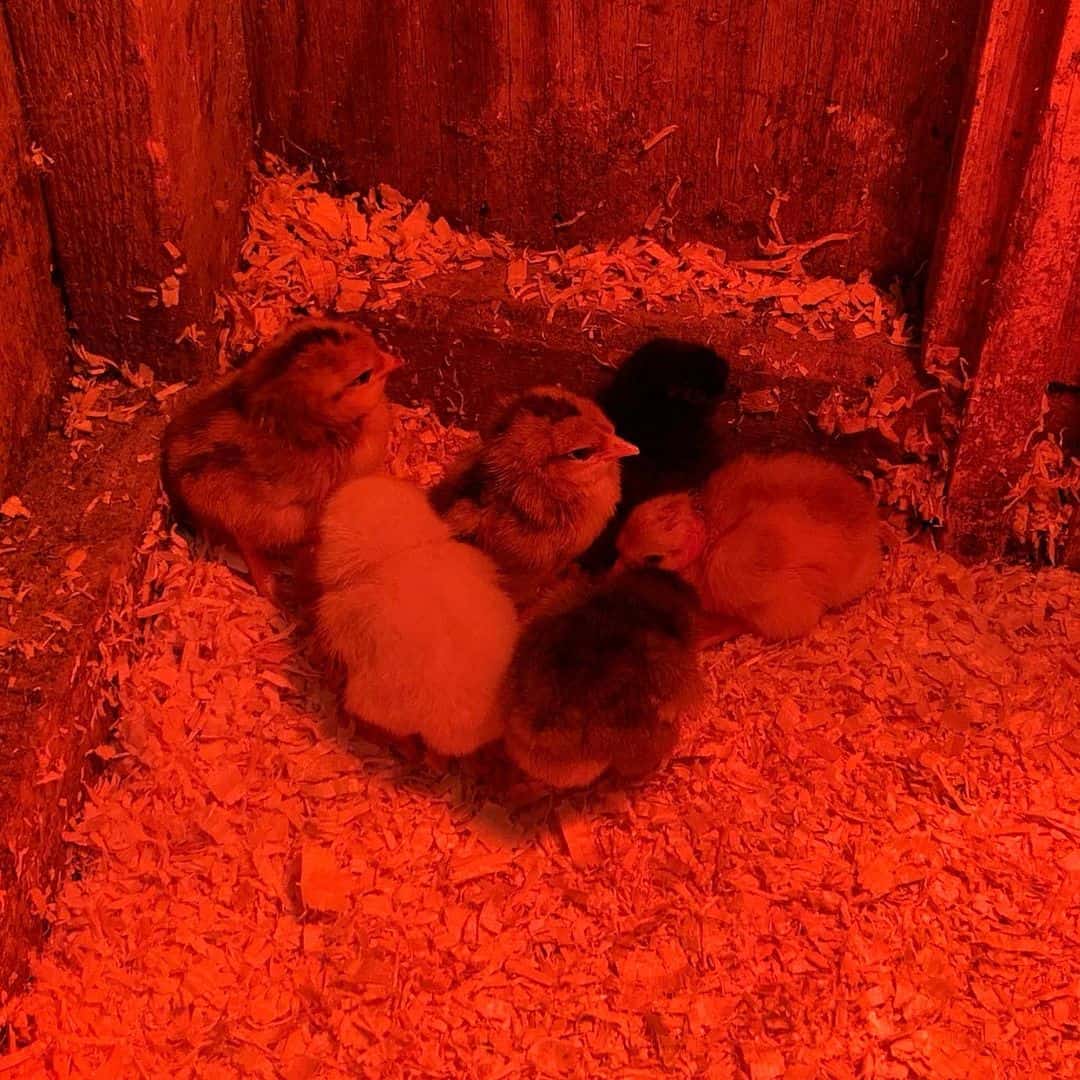
There are several ways to move your chicks outside, and the best way to do it is gradually! Most chicken keepers (including me) will tell you that this slow and gradual process is the best because they will not experience a temperature shock.
The right period to start moving them is when you remove the heat source, and your chicks have adult feathers. So, you can take them outside for a couple of hours when they are six weeks old.
If you notice that they are huddling together, that is your clue that they are cold. Some chicken keepers even start taking the chicks outside when they are four weeks old. However, this depends on the breed and also the climate.
If you live in a hot area, you can probably take them outside sooner, but the vital clue is that the temperature should not be below 50 degrees F. Another way to do it is to move them without letting them acclimate to the outside temperature.
Some chicken keepers like to do it this way and usually monitor their behavior to see if they are cold.
Do Chicks Need Supplemental Heat?
A common question when people move their chicks to the outside hen house is whether they need to use supplemental heat. The answer is no! Using a heat source may be a fire hazard, and coops made of straw, shavings, and wood can easily catch fire.
Believe it or not, chicken coop fires are not that uncommon, and they usually happen due to some miscalculations or heating lamps. Yes, you read that correctly! And interestingly, most coop fires happen during winter.
If you need fire prevention tips for your chicken coop, click here. So, instead of having a supplemental heat source in the chicken coop, you can make sure that the outside temperature is right for the chicks.
Also, you can always keep them outside during the daytime and move them into a garage or inside a chicken coop if you think they may become chilled during nighttime.
Adult chickens do not need a heat source, and some specific breeds, such as Orpington and Australorp, are very hardy and can handle lower temperatures due to their rich feathering. Of course, that does not mean you should keep them outside at freezing temperatures.
How to Know If Chicks Are Cold or Hot?
The best way to determine this is to monitor their behavior. You do not need to hover over them all the time, but if you see something out of the ordinary, you ought to address it immediately.
In addition to clustering together, baby chicks will make a distress call, a loud and continuous sound. You can touch them gently and check their temperature; if they are cold to touch, raise the temperature, or move the lamp.
You can also buy sun dome lamps for equal distribution of heat. On the other hand, if your chicks are too hot, they will keep apart, be lethargic, and be very quiet. They also tend to move away from the heat lamp; you can notice them hiding in the corners of the brooder.
The baby chick will try to keep its wings away from its body, attempting to cool down. Ultimately, you can notice the temperature is too high if they stop eating or show poor appetite.
Can I Keep and Raise Baby Chicks without a Heat Source?
In fact, you can, and some of the farmers prefer to raise them without a lamp. So how that works? The most important prerequisite to successfully raising baby chicks is providing them with the needed heat.
One of the ways to do that is to take them into your house or garage and insulate their brooder or nest. There are many other ways and tips to do this.
Conclusion
To summarize, chickens need a heat lamp for at least four to six weeks or longer, depending on their breed or the climate. Baby chicks die due to low temperatures, so new chicken keepers need to learn about raising chicks to avoid this situation!
In this article, we have covered some of the basic questions related to raising baby chicks, such as how long chicks need a heat lamp, how to set a brooder and the lamp, what is the best wattage, how to move chicks to the outside, and whether they need supplemental heat.
Do you plan to buy baby chicks and raise them? Please share your experience with us! If you have any questions, do not be shy and ask away!

